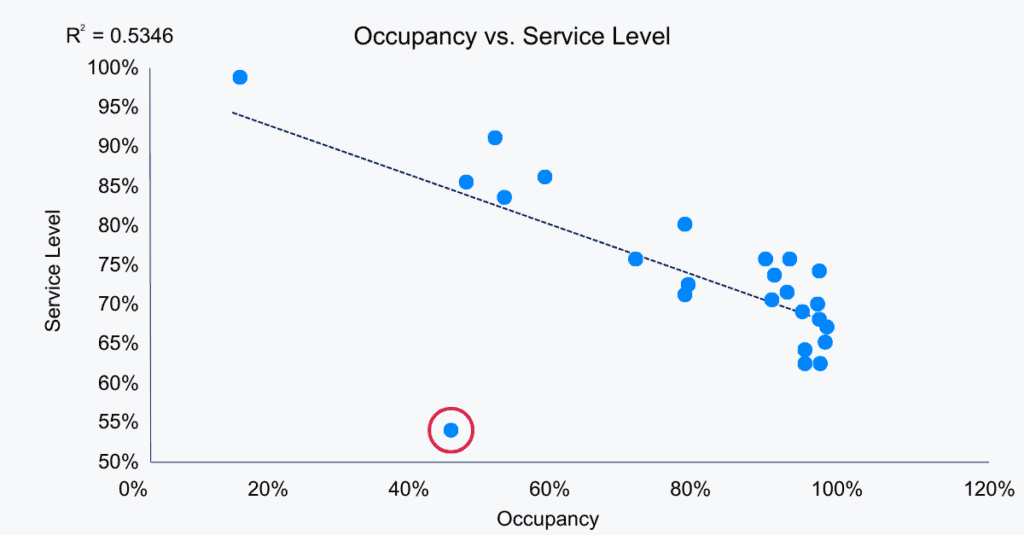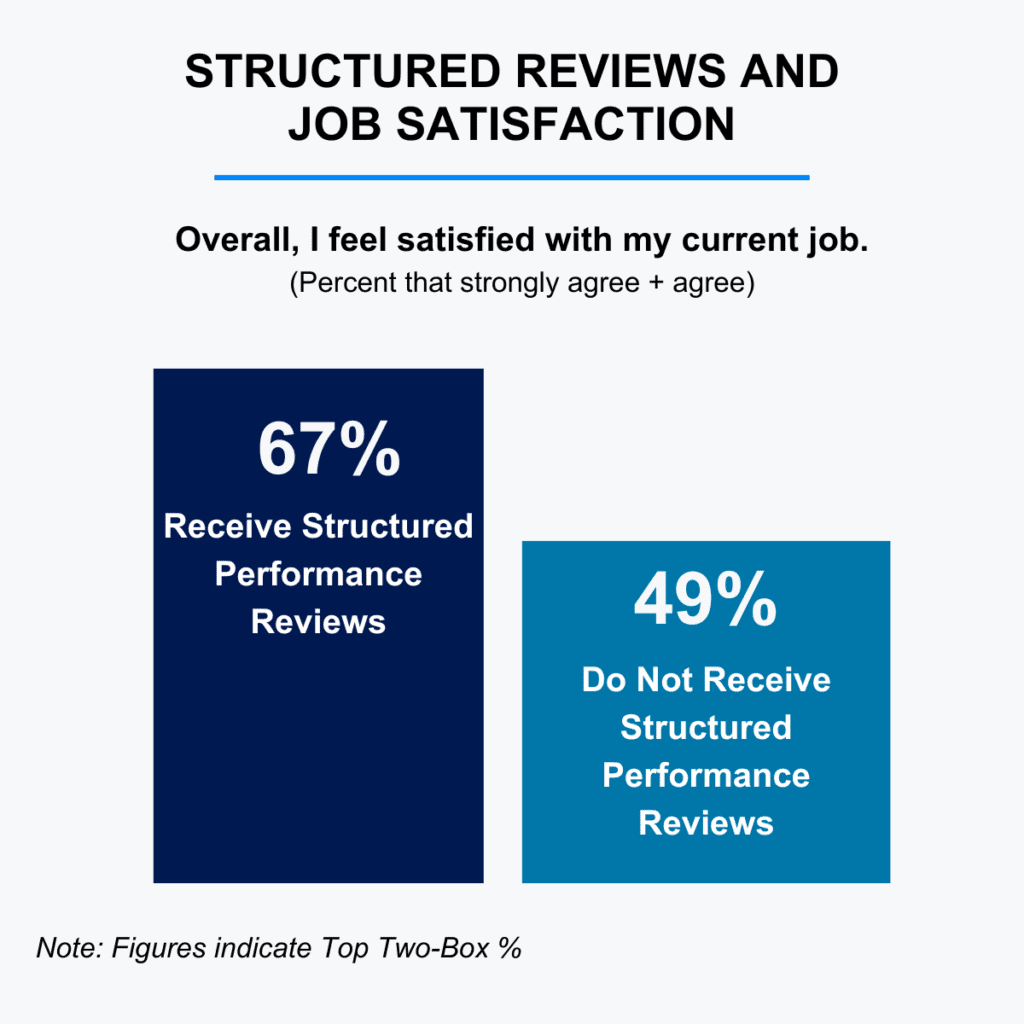
March 28, 2024
If you’ve been following along, you already know the incredible value that a balanced scorecard brings to performance management. In our previous articles, “Benefits of a Balanced Scorecard for Performance Management” and “Creating a Balanced Scorecard: What to Consider,” we delved into the significance of utilizing this strategic tool and explored the essential factors to keep in mind when developing one.
In this third installment, we’re ready to advance our understanding. We’ll uncover the secrets of leveraging two types of balanced scorecards to drive exceptional performance and achieve organizational goals.
1. Program-Level or Site-Level Scorecards
Let’s start by examining program-level or site-level scorecards, which serve as a strategic compass, enabling us to gain valuable insights and effectively steer performance toward success. To ensure seamless implementation, adopt a monthly review cycle involving key stakeholders such as the executive leadership team, functional leaders across various departments, and individuals responsible for data extraction and analysis.
By fostering a collaborative approach and consistently evaluating the metrics within your scorecard, you pave the way for informed decision-making and drive performance improvements across your organization.
This monthly review should address three primary things:
a. Data Verification
Accuracy and reliability are the cornerstones of a robust scorecard system. Examining the data collection process and meticulously verifying its integrity is imperative. While certain data sources may naturally experience delays, the information presented on the scorecard should generally be up-to-date and comprehensive, except in cases where business requirements dictate otherwise.
Pay close attention to any anomalies or recurring patterns in the data, as these could indicate potential issues. Even seemingly minor clerical errors can have far-reaching consequences if left unaddressed. Therefore, functional leaders must actively communicate any performance discrepancies they observe.
For instance, if the occupancy rate appears to be nearing maximum capacity while agents remain idle, address this discrepancy and delve into the root causes.
In the example below, the team reviewing the data should investigate the data point circled in red. It does not follow the pattern and was likely supposed to be 94% service level but was entered as 54%.

b. Metric and Target Review
Review each metric and establish targets to understand performance. Avoid frequent changes to these targets, but address them when circumstances change or they become less meaningful.
For example, when adding a new product that requires program support, where interactions related to this product are frequent but brief, it may be necessary to adjust the average handle time (AHT) target to accommodate this change. Likewise, if recent enhancements have led to the issue resolution metric surpassing the target by 15%, the target has lost its significance and should be raised accordingly.
c. Understanding Performance
An accurate program-level scorecard, coupled with meaningful targets, serves as a powerful compass, directing your attention and actions toward the areas that require immediate attention. Data-driven calculations and insightful discussions can help achieve this alignment.
A well-crafted scorecard enables you to identify underperforming areas, prioritize critical aspects and focus on the most significant performance gaps. This holistic view guides your efforts for performance improvement, optimizing resource utilization and maximizing the value of your initiatives.

Course
Master operational excellence in your contact center and digital services to enhance customer satisfaction, drive sales, and reduce costs with COPC® Best Practices for Customer Experience Operations course.
2. Agent Scorecards
Now, let’s explore agent scorecards crucial in coaching, development and staff engagement. These scorecards serve as a valuable tool during monthly coaching sessions with agents. While it’s important to have frequent and timely coaching sessions, especially when new evaluations or customer feedback are available, a monthly cadence is typically ideal for coaching metric performance.
This frequency strikes a balance between being frequent enough to address issues promptly and being based on sufficient data for reliability.
During these sessions, the scorecard acts as a guiding framework, similar to how program scorecards facilitate performance improvement projects.
Focusing on one or two specific areas can help agents maintain clarity and avoid being pulled in too many directions. When determining the areas for development, consider the agent’s individual performance gaps and the program’s overarching goals.
a. Coaching Observation
Observation is of paramount importance in ensuring effective coaching. With that in mind, let’s explore the following key considerations:
- Recognize coaching as a skill that requires ongoing development.
- Incorporate adjustments to hiring and training practices to enhance coaching skills.
- Regularly observe coaching sessions in a way similar to evaluating customer interactions.
- Utilize observation forms as a means to set expectations and evaluate performance.
- Recording sessions can help remove observation bias during reviews.
- Evaluate if supervisors selected the appropriate focus areas for coaching.
b. Annual Performance Reviews
The agent scorecard proves valuable during annual performance reviews. With an aggregated overall score, scorecards offer a comprehensive perspective on agents’ performance over time. Determining fair expectations for agents at different career stages can be challenging.
However, reviewing performance trends provides insights into an agent’s progress compared to past performance. Is a newer agent showing improvement but not yet reaching the desired level? Is a tenured high performer experiencing a decline? While a snapshot of performance may still favor the latter, addressing any deviation from an agent’s expected trajectory is crucial.
Additionally, utilizing scorecards for career planning can be incredibly beneficial. While agent and supervisor focus tends to be on the present or immediate timeframes, investing time and effort in understanding and nurturing long-term development can foster engagement and help build a strong talent pool to meet sudden advancement needs.
Scorecards can bring objectivity to the subjective. These can be invaluable for stack ranking staff within your organization which can help with incentives, shift bids, skilling, measuring the success of pilots and much more.
Summary
Implementing a balanced scorecard can help organizations mitigate the frenetic nature of operations. While a sense of urgency remains crucial, mature organizations recognize the value of incremental and sustainable improvements over short-lived dramatic changes.
Some organizations can solidify their existing approaches by incorporating best practices, while others may require more transformative efforts to fully leverage the benefits of a balanced scorecard.
In either case, if you have specific questions or face unique challenges, the experienced experts at COPC can provide guidance. With decades of experience, we have assisted numerous groups in overcoming obstacles, identifying areas for improvement, and effectively developing and motivating their staff. For further information or inquiries, please don’t hesitate to contact us.

